Elementor is one of the most popular WordPress page builders. It’s easy to understand why over 5 million websites are designed with Elementor. If you’re a part of this growing community, you might be looking for ways to password-protect content in Elementor.
In this article, we’ll show you step-by-step how to password-protect content in Elementor using the Passster plugin.
Table of Contents
Elementor page builder for WordPress
As a WordPress website owner, using a page builder like Elementor versus a standard WordPress theme means that you get better control over your site’s design. In addition to this, it gives you the power to create a bespoke website without needing to know HTML or CSS.
Elementor is an all-in-one page builder for WordPress that lets users control just about every aspect of their website’s design from a single, intuitive user interface. It leverages visual design which means that you can preview your site’s front-end while you’re building pages.

Here’s a quick overview of the key features on offer with Elementor:
- Drag and drop editor with live editing functionality meaning you can view each page element as you design it.
- Gives you tons of font options to choose from out of the box with the ability to upload custom fonts.
- Comes with widgets to help you generate leads and increase social engagement.
Although Elementor is a feature-rich WordPress page builder, it doesn’t let you password-protect content on your website. For this, you’ll need to use the Passster plugin.
How to password-protect content in Elementor (in 3 easy steps)
There are plenty of scenarios where you might need to password-protect content in Elementor:
- Grant paying members access to exclusive content on your website like online courses, training material, or resources.
- Make it easy for prospective clients to view your portfolio without making it available publicly.
- Let clients view photo albums and select the photos they’d like to purchase. This is particularly useful if you’re a photographer or designer.
The easiest way to password-protect content in Elementor is by using the Passster plugin.
Step #1: Create a page or post using Elementor
Assuming you already have the Elementor plugin installed on your WordPress website, the first thing you need to do is create a new page or post. To do this, go to Pages > Add New from the WordPress admin panel and click the Edit with Elementor button.

Give your page a title and add some content to it. This should include the content you’d like to password-protect.
Once you’re done, click the Publish button to proceed.
Step #2: Install Passster
Now that you’ve created a page (or post) in Elementor, the next step is to password-protect content. For this, you’ll need the Passster plugin. If you haven’t done so already, get the Passster plugin and install it on your WordPress website.

The Passster plugin is available free for download from the WordPress Plugin Directory. This is perfect for anyone who’s looking for simple password protection. However, if you want to password-protect content with multiple passwords then you’ll need to get the premium version.
Passster is the easiest way to password-protect content in Elementor. You can choose to password-protect the entire page (or post) or a chunk of content using a shortcode.
Step #3: Password-protect content
There are two ways to password-protect content in Elementor using Passster:
- Simple password protection. You can use a single password to restrict access to content. This is the simplest way to password-protect content in Elementor.
- Multiple password protection. You can set up a password list (multiple passwords) to restrict access to content. This way, you can share different passwords with different users or different types of users and revoke access as necessary.
Go to Passster -> Areas and create a new area:
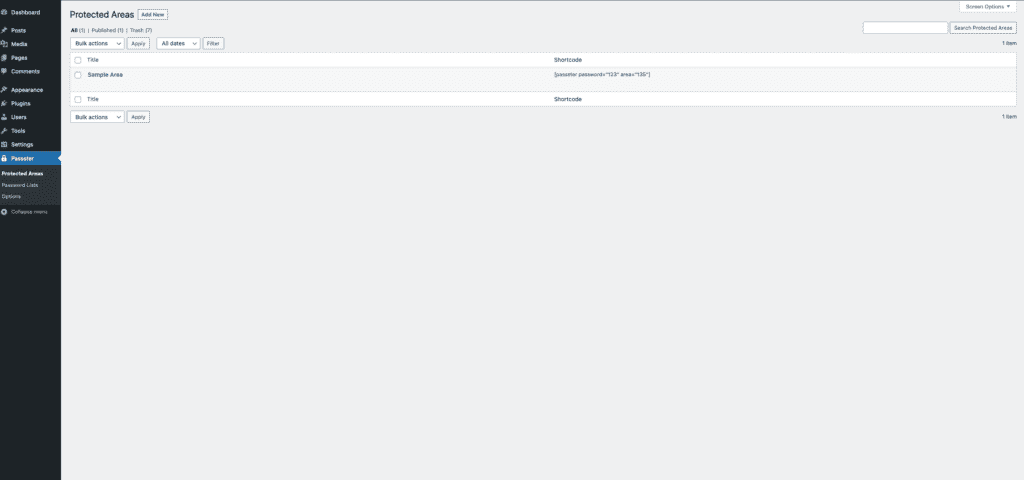
Now you can configure all the settings and add the protected content for that area:
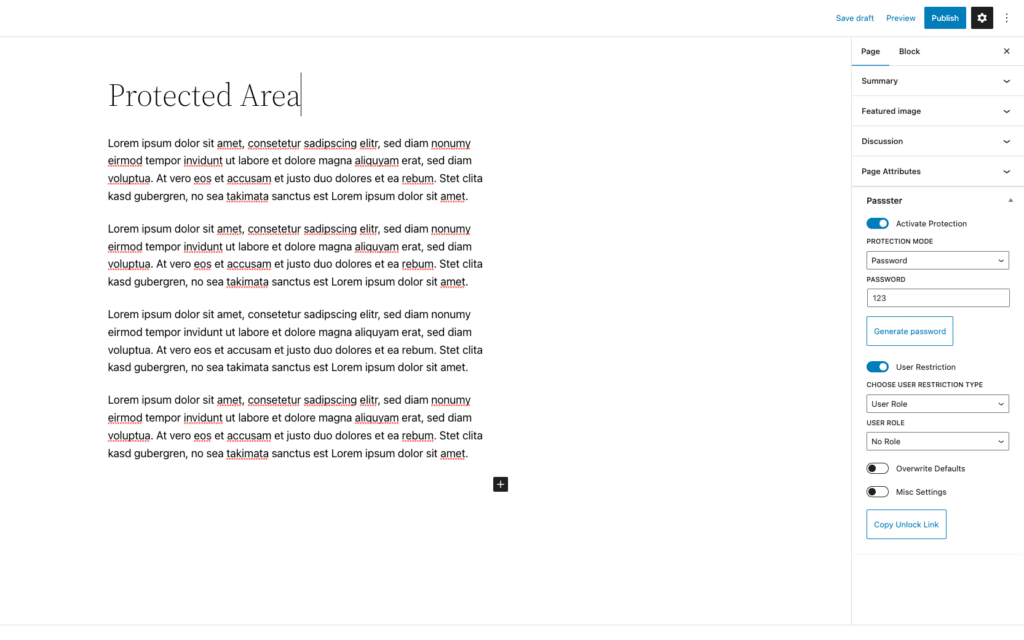
When you are done, you save the area and you can copy the shortcode from the meta box called “Shortcode” for usage within Elementor.
Tip: You can also modify this content with the Elementor Page Builder, the only thing you have to do is activating Elementor for the post type “Protected Area”.
You will find this setting in Elementor->Settings->General:
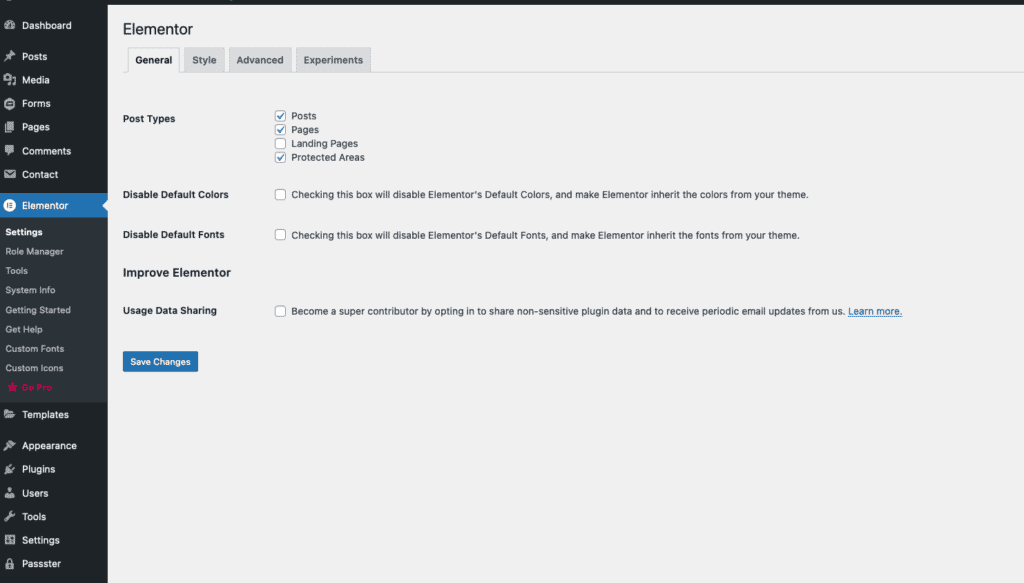
Now you can copy modify the restricted area with Elementor to match it with your general design. When you are done you can copy the shortcode and add it to your Elementor page:
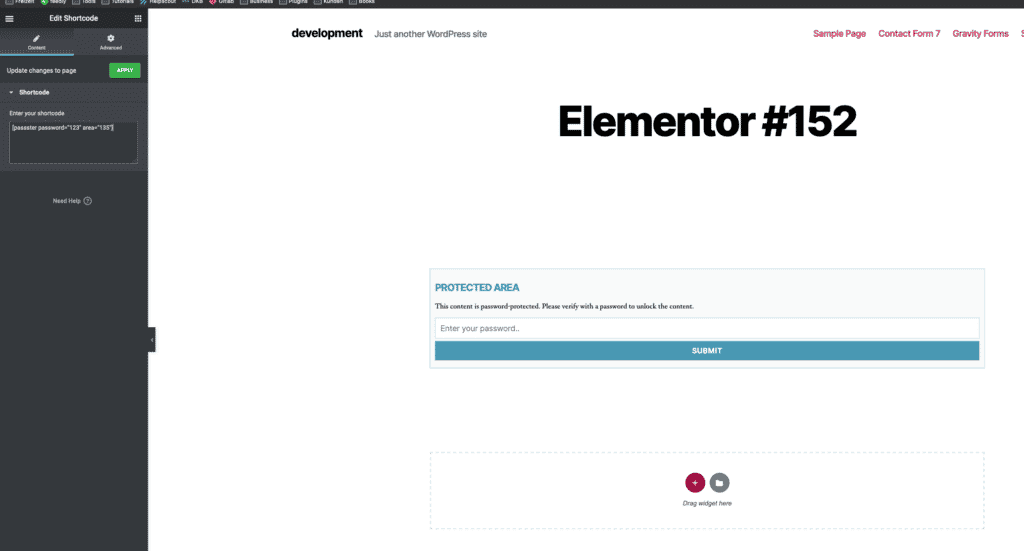
That’s all for now! You have successfully created a protected area within Elementor.
Passster
Protect your entire website, entire pages, or just parts of your content with one or more passwords.
If you have the premium version of Passster installed on your WordPress website, you can password-protect content in Elementor using multiple passwords:
Go to Passster > Password Lists from the WordPress admin panel and click the Add New button. Next, give your password list a title and enter the passwords you’d like to set in the text area as a comma-separated list.
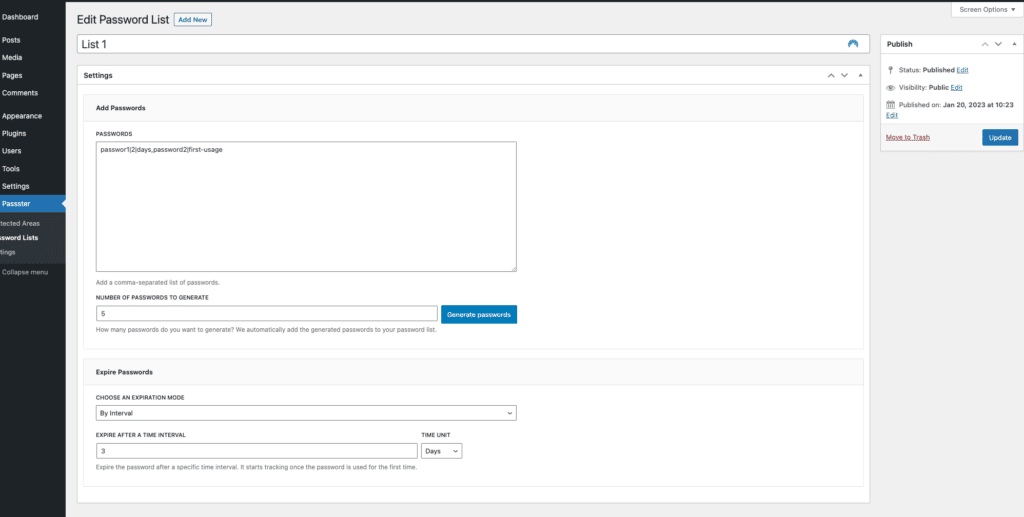
Passster also gives you the option to expire passwords after usage. This is useful when you want to grant users access to the password-protected content in Elementor only once. You can select this list within your area now.
Bonus: other ways to restrict access to content in Elementor
The best part about using Passster with Elementor is that you can restrict access to content in other ways, as well. Here’s a quick overview of the different ways you can prevent unauthorized users from accessing content in Elementor:
- Google reCAPTCHA is perfect for when you need to protect your website content against bots and spam accounts. Anyone who accesses the page will see a simple CAPTCHA box on the front-end which they’ll have to complete to view the content.
- User role protection is great for anyone that needs to provide specific users (or types of users) access to content. In other words, only logged-in users with permission will be able to view the content.
- Unlock links let you grant users access to content without requiring them to enter a password, complete a CAPTCHA, or be logged in to their user account. They simply click the link to view the restricted content in Elementor.
For more information on how to set these up, be sure to check out the 6 Different Ways to Restrict Content in WordPress article.
Password-protect content in Elementor
If you’re using Elementor to design your WordPress website and need a way to password-protect content in Elementor then you need the Passster plugin. It’s incredibly easy to use and lets you password-protect content with a single password and multiple passwords.
In addition to this, you can also use Passster to restrict access to content in other ways including by using CAPTCHA or Google reCAPTCHA, user role protection, and unlocking links.
Passster
Protect your entire website, entire pages, or just parts of your content with one or more passwords.